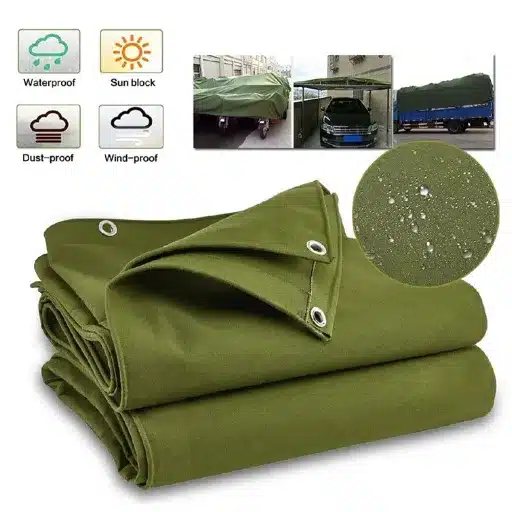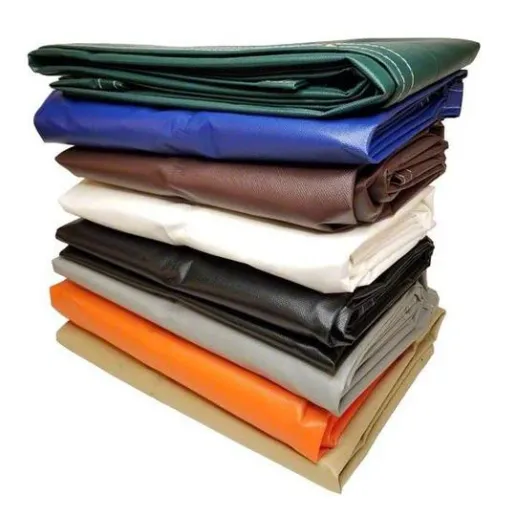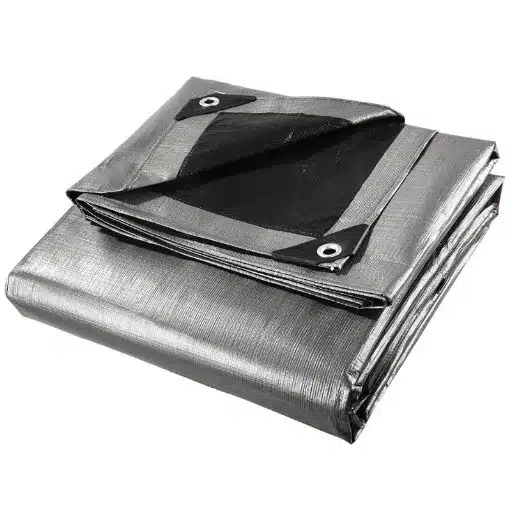Choosing the right material for tarpaulin operations generally comes down to vinyl or PVC tarpaulin. The two materials may act differently and fit different needs; however, it is important to know the key contrasts to make the right choice. Whether you want something resilient and flexible or suitable under special circumstances, this article will teach you the basic differences between the two tarpaulins. Once you finish reading, you will indeed have in your hands the right tools to choose which material suits your project best while saving you some time and guaranteeing quality performance.
Understanding the Basics of Tarps
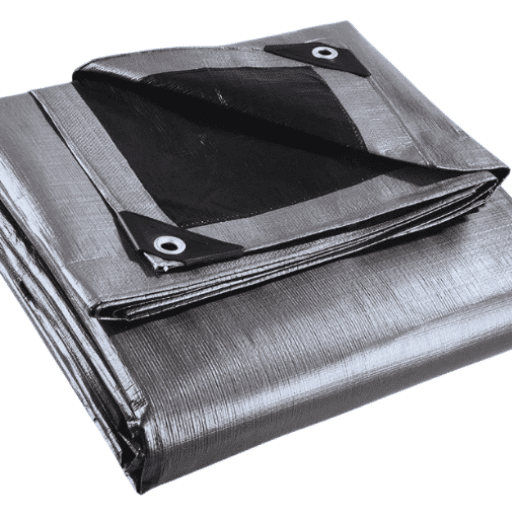
What is a Tarpaulin?
Tarpaulins, commonly known as tarps, are typically vast sheets of strong, flexible, and waterproof material. These are useful for protection against weather elements such as rain, wind, or even sunlight. In modern times, tarps are usually fabricated from materials such as polyethylene, vinyl, or canvas, with a coating or treatment to confer durability and water resistance on them. A wide usage of tarps includes construction, transportation, agriculture, and recreation to protect objects or areas from moisture, debris, and UV rays. Contemporary tarps can come in varying sizes, thicknesses, and degrees of durability suitable for either short-term or long-term applications.
Most Common Types of Tarps
Poly Tarps
Polyethylene tarps, or poly tarps, are amongst the most common types of tarps, precisely because of their low cost, water resistance, and very lightweight. They are used to cover outdoor equipment, construction sites, and temporary shelters.
Vinyl Tarps
Made with very strong vinyl materials, these tarps are much stronger and tear-resistant than their polyester counterparts. Heavy-duty applications include covering vehicles, heavy machinery, or prolonged outdoor storage.
Canvas Tarps
Canvas tarps are made from sturdy, breathable fabric and are employed in situations requiring lesser condensation. They can usually be found on farms, being used for painting, or as machinery covers where breathability is necessary.
Mesh Tarps
Tarps with holes to allow free-flowing air provide shade and mild protection. They have been employed for privacy screening, shading patios, or securing open loads such as debris or construction materials.
Heavy-Duty Tarps
Being heavier and reinforced for durability, heavy-duty tarps are put to use against harsh weather treatments and harder applications. They have various applications that cover long-term projects, hurricane covers, and industrial stages.
Each type of tarp has its own set of characteristics and usages. A prospective buyer, based on his requirement, selects the tarp that will satisfy that requirement. Trends in popularity have shown poly tarps to be more commonly used mostly because they present good balance between price and efficiency.
The General Vinyl and PVC Tarp View
Vinyl and PVC tarps are known to deliver excellent performance and ensure all-round protection against unforgiving weather. Made out of heavy-duty synthetic materials, these tarps are waterproof, resist UV rays, resist chemical actions, and thus find their applications where extreme weather or corrosion occurs. Due to almost superlative performance and longevity, these tarps are used in industries, construction, trucking, and agriculture.
With respect to the very important query about uses and benefits for vinyl tarps, interest has certainly seen an upswing according to the latest statistics recorded by the search engine. A common question asked is, “Are vinyl tarps better than poly tarps?” The answer depends on what they will be used for. If application is heavy-duty and durability and weather resistance matter profoundly, vinyl tarps outshine poly tarps for tough-weather conditions. But for lighter applications where money is a concern, perhaps a poly tarp would make the better choice. This shows the importance of evaluating the needs at hand before making a decision.
Key Differences Between Vinyl and PVC Tarpaulin
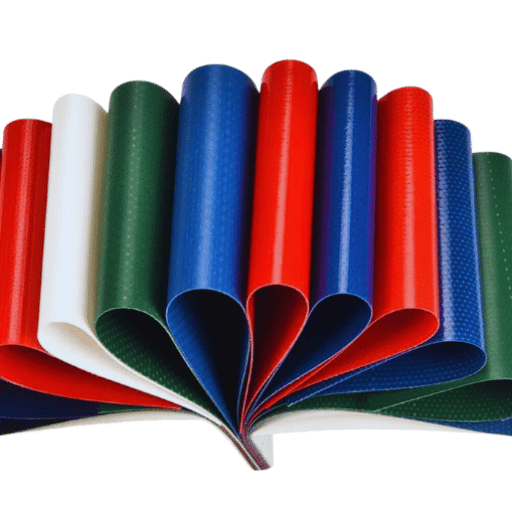
Material Composition
The vinyl tarpaulin is a polyester fabric coated with polyvinyl chloride; this coating contains plasticizers to impart some flexibility and durability to the fabric. Because of this composition, they are resistant to tear and are UV resistant, and also withstand heat and weather. They find fierce applications in industrial, agricultural, and heavy-duty works. Poly tarps, on the other hand, are made out of polyethylene, making them lighter and more inexpensive. Poly tarps are more suited to short-term and light-duty applications but lack the robustness and life span that vinyl tarps provide. With the latest search data from, it is clear that vinyl tarpaulins are consistently chosen over long term heavy-duty uses just because of their superior material composition and life.
Durability and Flexibility
Vinyl tarps really shine when it comes to durability and flexibility, making them suitable for varied, grueling applications. According to the latest reports from ‘s search engine, users search more for solutions that can carry through severe weather conditions without tearing for months into years. Vinyl tarps work these criteria, as they are capable of withstanding even the most severe environments and hazards without ever compromising usability. The flexibility of these tarp materials makes it easy to adapt them to various configurations and surfaces, which accounts for their broad industrial and personal use. These two factors, strength, and flexibility, together place vinyl tarps firmly as the long-term solution for customers.
Water Resistance and Waterproofing
Key Difference: Water-Resistant vs. Waterproof
- Water-resistant tarps: Offer partial aid by repelling water to some extent, suitable for light water exposure
- Waterproof tarps: Build a fully sealed barrier from any water, never letting even a drop in, no matter the exposure duration
Water resistance and waterproofing are gift features that vinyl tarps carry in their respective domain of keeping moisture damage at bay through variable environmental conditions. According to recent data, people often seek answers to the question of what the differences are between water-resistant and waterproof materials. Typically, vinyl tarpaulins come with high-grade waterproofing that not only repels water but also withstands the durability test of being in heavy rain or full immersion for a longer period of time. Well, these types of protection make for the perfect choice in construction, agriculture, and transportation, as well as for private use for recreational activities.
Benefits of Vinyl and PVC Tarps
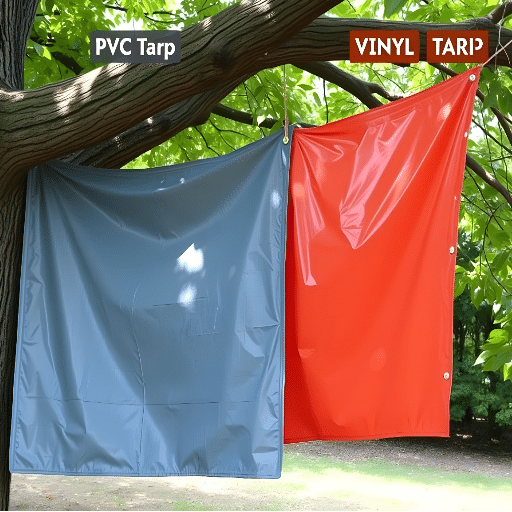
Advantages of Vinyl Tarpaulin
- ✓ Tear, abrasion, and puncture resistance
- ✓ Protection against extreme weather conditions
- ✓ Waterproof and UV-resistant features
- ✓ Easy to clean and maintain
- ✓ Lightweight and flexible with new material developments
Benefits of PVC Tarpaulin
- ✓ Exceptional durability and cost-effectiveness
- ✓ Extreme weather resistance (rain, snow, sunlight)
- ✓ Resistance to abrasion, chemicals, and tearing
- ✓ Environmentally responsible with recyclable options
- ✓ Sustainable manufacturing practices
Vinyl tarps are considered durable and versatile and are popular in various sectors. These tarpaulins provide tear resistance, abrasion resistance, and puncture resistance even under hostile conditions, with their performance appearing never to give way over time. Features such as lightness and flexibility have been added to the property list of vinyl tarps with new material developments, making vinyl tarps easier to handle without compromising strength. From protection during shipments to covering machinery to temporary shelters, vinyl tarpaulins offer unmatched advantages for industrial and individual uses.
PVC tarpaulins are meeting all the demands for durability, utility, and cost-effectiveness and are thus highly sought-for various applications. According to the last data from the search engine, users often ask about the environmental impact of PVC tarpaulins. Advancements in PVC technology recently catered to these concerns by way of making tarpaulins that could be recyclable. Many manufacturers now claim to be working in a manner that is best for the environment, while the materials they use can be reused or recycled at the end of their life cycle. This brings to light the fact that PVC tarpaulins not only serve an amazing purpose but also can stand along with the sustainability efforts, making it a very practical and responsible choice for today’s industries.
The Cost Of Using Vinyl Vs. Using PVC
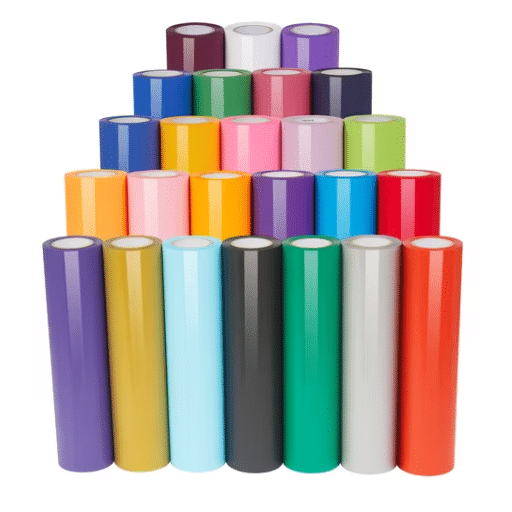
💰 Cost Analysis Summary
Pricing-wise, vinyl and PVC are evaluated with respect to several criteria at hand, such as durability, application, and value generation over time. PVC is often appreciated as being more economically efficient due to its durability and versatility. Modern PVC substances are made to endure the rigors of severe environmental conditions, thus reducing frequent replacement and maintenance and save costs over time. Vinyl can work in short-term applications such as signage or decoration but may not have that same enduring presence worthy of an industrial or outdoor setting.
As per current data trends, the willingness to embrace sustainable and user-friendlier materials has made various industries embrace PVC because it can be recycled and offers predictable performance in the most testing environment. While both materials can be manipulated to suit various requirements, because of the advanced technologies put into PVC and the cost of putting it into workable application, industries looking for durable and mobile solutions generally receive better value from PVC.
Applications of Vinyl and PVC Tarps
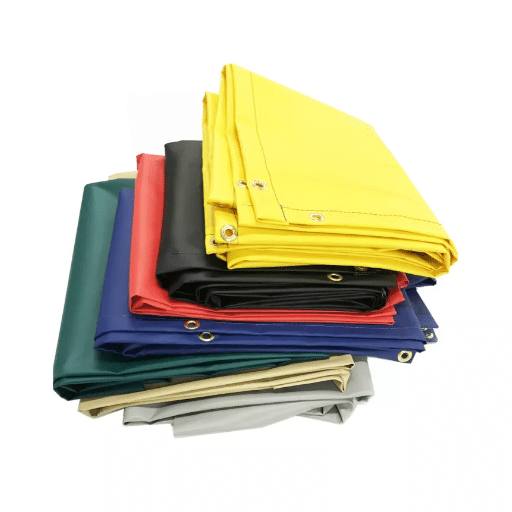
Industrial and Commercial Uses
🏗️ Construction
Scaffoldings, floor protection, debris containment
🌾 Agriculture
Crop protection, equipment covering
🚛 Transportation
Weather protection for cargo during transit
Vinyl and PVC tarps have waterproof qualities which make them among the most sought after products in the water protection business. Recent trends in search terms indicate a heightened interest in finding “best tarps for heavy-duty use” and “customizable industrial tarps.” Their growing demand means they are inexpensive yet very effective, sustainable, and practical in terms of various applications.
Recreational and Personal Uses
Vinyl and PVC tarps have also found increasing use in the recreational and personal sectors because of their greater durability and adaptability. Outdoor enthusiasts view them as dependable waterproof coverings for camping activity. Waterproof covers or tents or ground sheets or shelters may be created with these tarps. The tarps usually find usage in the backyard, protecting the pool and furniture or grilling equipment from antagonistic weather conditions. Search data from indicates that search queries for “best tarps for camping” and “durable outdoor tarps” skyrocketed within the past year, showing the mounting interest in these multipurpose tools. Being multipurpose make them the best tarps for work and daily uses, thus having high value in many aspects of modern life.
Selection of the Right Tarp for Your Needs
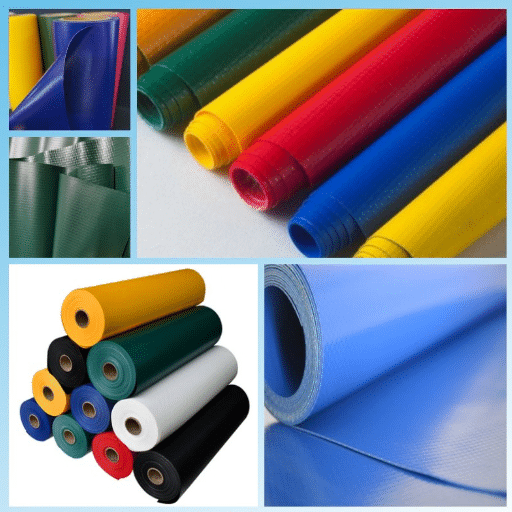
🎯 Selection Guide
Choosing the right tarp for your needs should take into consideration material, size, and intended use. Heavy-duty polyethylene tarps are very durable and can cover equipment or face severe weather conditions; cotton canvas tarps, on the other hand, serve best for indoor cases where air permeability is needed. UV-resistant tarps come in handy when one needs to set them outdoors for prolonged hours and use them to guard against sun damage. Search trends have increasingly revealed that both outdoor enthusiasts and professionals alike demand specific features. Searching for “best waterproof tarps” and “UV-resistant heavy-duty tarps” is a trend on the rise. Knowing your primary intended use, combined with what is trending in searches, must guide you toward an informed purchase that caters to all of your requirements.
Environmental Impact and Maintenance
Environmental Considerations of Vinyl and PVC
Vinyl and PVC tarps are some of the most widely used materials for their durability against harsh weather conditions. However, they also pose severe environmental concerns. Being petroleum-based, the production processes require high energy input and emit greenhouse gases; plus, their resistance to decomposition results in them ending up in landfill sites for several decades unless recycled properly. Search data from engines substantiate this public awareness on the issues with queries such as “eco-friendly tarp alternatives” and “sustainable PVC disposal methods.” This trend indicates increased demand for tarps made from either recycled or biodegradable materials. Cross-referencing the environmental impact with search trends will help socially responsible consumers choose products that stand for sustainable practices and low ecological footprints.
Maintenance Demands for Each Material
By dovetailing these ideas into proper usage, consumers can convert their choices into practical and sustainable avenues for enhancing the usable life of their tarps.
Longevity and Performance Over Time
Tarps are pondered often if one considers the actual length of time they last, along with their erosion under differing circumstances. “Lifetime” basically depends on the tarp material, application, and maintenance. Any high-quality tarp, i.e., one made from polyethylene or canvas, may last anywhere from five to ten years, provided it is well cared for. Clean it often, don’t leave it exposed for a long time to the ultraviolet rays, and fix any sort of minor damage as soon as possible so that it can perform well. Modern innovations in technology, with UV-resistant coatings and heavy-duty grommets, help make them more durable. A mixture of such care and modern technology can keep tarps performing well for a very lengthy time, even under very hard working conditions.
Frequently Asked Questions
📋 Summary & Conclusion
Understanding the differences between vinyl and PVC tarpaulins is crucial for making informed purchasing decisions. While both materials offer excellent protection against weather elements, PVC generally provides superior durability and cost-effectiveness for long-term applications, whereas vinyl excels in flexibility and ease of handling. Consider your specific needs, budget, and environmental impact when choosing between these two excellent tarpaulin options. Whether for industrial, commercial, or personal use, both vinyl and PVC tarps represent reliable solutions for weather protection and material covering needs.
📚 Reference Sources
- New School Portfolio: Explains the role of vinyl in PVC tarpaulin, highlighting its flexibility and durability as a key component.
- University of Michigan News: Discusses the properties of PVC, including its plasticizers and environmental considerations, which can be relevant for understanding material differences.
- University of Illinois Chicago (UIC): Provides insights into the differences between vinyl tarps (PVC tarps) and other materials, focusing on their composition and performance.

